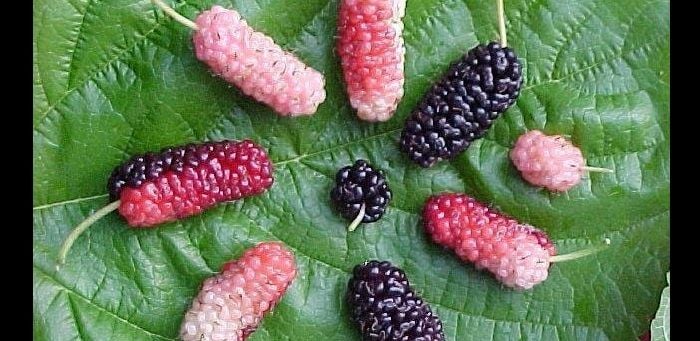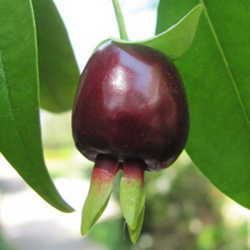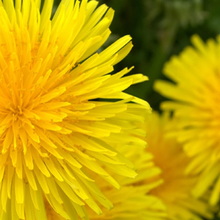Mulberry Trees
The mulberry tree is loved by silkworms, birds and humans alike. As you can see below, the fruits resemble black berries more than fruit that we typically expect from a tree. According to Dave's Garden PlantFiles the tree is from the Moraceae, which refers to the Morus (mulberry) genus. The ripe fruit is used in jams, jellies, pies and wines. In the picture shown below, the black-purple fruits are ripe while the others are in various stages of ripeness.
There are many varieties of mulberry trees, including trees that produce berries as large as a man's thumb. Most of the mulberry trees that I have seen in Oklahoma produce fruit only about a third as large as that; slightly larger than the smallest fruit in the picture above. Some trees produce a dark purple fruit, while others produce a reddish color fruit. Another variety produces an off-white fruit. Notice the main picture in the article; this showcases both the dark purple and the white berries. The red and dark purple berries taste like medium- (not strong) flavored blackberries. By this, I mean that the fruit is not as tasty as most berries. Some even report that the fruit is pretty much tasteless. I have heard that different types of mulberry trees have more flavorful berries. The white berries, although not as attractive to birds, are "honey" sweet.All types make excellent pies and jams.
Beware if you choose to plant a purple or red mulberry tree. Not only does the berry itself stain anything it touches, but droppings from a bird that has snacked on mulberries will stain as well. You should plant the tree away from driveways and walking paths. The same stain that causes such headaches for homeowners is a natural red and/or purple dye. I have not tested the strength of the dye but I am considering extracting some of the color while still using the berries. I believe that the berries would make wonderful shades of purple and pink to spark up foods, soaps and baskets.
I have heard that the mulberry fruits pack some potent anti-bacterial and fungal fighting natural compounds, as do most fruits. I have also read that the leaves, fruit and bark of the mulberry tree all have been used for medicinal purposes. However, I have also read that the leaves and unripe berries may have slight hallucinogenic properties. Some people report that they have allergies to the mulberry pollen and/or to the berries. It is best to never use the 'herbal pharmacy' without consulting your doctor first.
Mulberry trees are quite adaptable to many gardening zones and conditions. My mother remembers trees with large mulberries growing in upstate New York. They also grow in Oklahoma. I have seen mulberry trees flourishing in soil that other plants hate. They grow in partial shade and in full sun, although the ones in full sun seemed to produce more berries. One tree that we saw while showing houses about 6 years ago was the largest mulberry tree we have ever seen; it must have been about 80 feet tall. Most of the other mulberry trees have been significantly smaller. I have been thinking about experimenting with growing a mulberry tree espalier since the berries resemble typical vine fruits.My mother and I transplanted a mulberry tree years ago. We thought the tree was dead, but we talked to it, commanded it to live, blessed it and prayed for it. The tree lived. Although it is not very tall, it has produced berries for many years. Since that time, I have heard that large cuttings of the mulberry tree will root nicely.
My mother usually gives us some of the harvest of her tree, since at the moment, I no longer own a mulberry tree. This last winter, after a horrible Oklahoma ice storm, I was forced to throw out the thawed 2007 crop of mulberries, which I had frozen. Try some mulberries added to any of your favorite pies or cobblers or make some wonderful mulberry jam. This fruit grows without a lot of extra care and you'll be delighted to say that the berries in your pie were grown in your garden.
If you don't care to harvest the fruit yourself you might want to consider planting a mulberry tree in an out-of the way area for free bird food for your fine feathered friends. If you look closely, hidden among the branches of a mulberry tree, you might catch a glimpse of a mockingbird, cardinal, blue jay, robin, finch or another bird nestled among the branches, enjoying a delicious snack of mulberry pie without the crust.
Mulberries are a wonderful addition to your garden. May your mulberry trees grow well and produce tons of fruit for you and the birds to enjoy.
The pictures shown here are all from Dave's Garden PlantFiles.


















